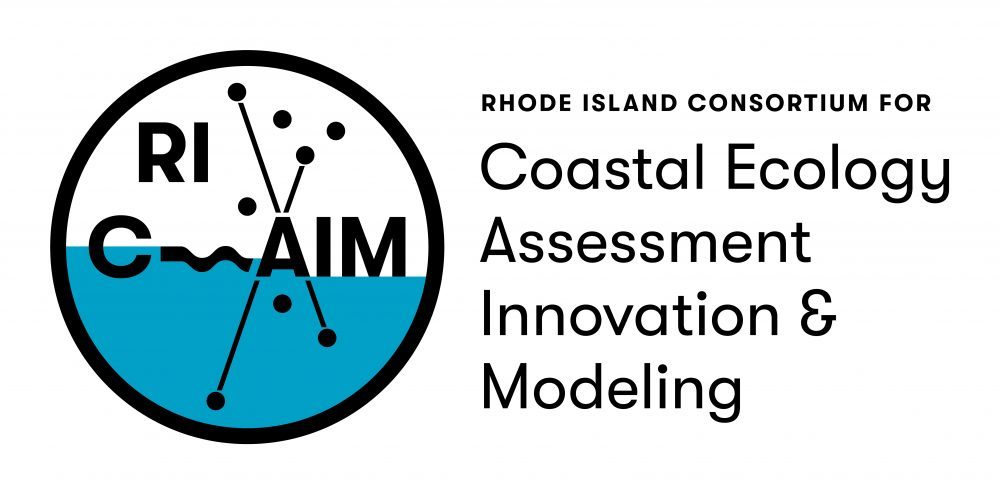Easier access to scientific data

|
ERDDAP at RI Data Discovery Center
Easier access to scientific data |
Brought to you by
RI Data Discovery Center and

|
| griddap | Subset | tabledap | Make A Graph | wms | files | Title | Summary | FGDC | ISO 19115 | Info | Background Info | RSS | Institution | Dataset ID |
|---|---|---|---|---|---|---|---|---|---|---|---|---|---|---|
| https://pricaimcit.services.brown.edu/erddap/tabledap/buoy_telemetry_0ffe_2dc0_916e.subset | https://pricaimcit.services.brown.edu/erddap/tabledap/buoy_telemetry_0ffe_2dc0_916e | https://pricaimcit.services.brown.edu/erddap/tabledap/buoy_telemetry_0ffe_2dc0_916e.graph | Buoy Telemetry: Automated Quality Control | The near real-time data presented here is intended to provide a 'snapshot' of current conditions within Narragansett Bay and has been subjected to automated QC pipelines. QA of data is performed following manufacturer guidelines for calibration and servicing of each sensor. QC'd datasets that have undergone additional manual inspection by researchers is provided in a 3 month lagging interval. Following the publication of human QC'd data, automated QC'd data from the previous 3 month window will be removed. See the 'Buoy Telemetry: Manually Quality Controlled' dataset for the full quality controlled dataset.The Automated QC of measurements collected from buoy platforms is performed following guidelines established by the Ocean Observatories Initiative (https://oceanobservatories.org/quality-control/) and implemented in R.\n Spike Test: To identify spikes within collected measurements, data points are assessed for deviation against a 'reference' window of measurement generated in a sliding window (k=7) . If a data point exceeds the deviation threshold (N=2), the spike is replaced with the 'reference' data point, which is determined using a median smoothing approach in the R package 'oce'. Despiked data is then written into the instrument table as 'Measurement_Despike'.\n Global Range Test: Data points are checked against the maximum and minimum measurements using a dataset of global measurements provided by IOOC (https://github.com/oceanobservatories/qc-lookup). QC Flags from global range tests are stored in the instrument table as 'Measurement_Global_Range_QC'. QC Flags: Measurement within global threshold= 0, Below minimum global threshold =1, Above maximum global threshold =2.\n Local Range Test: Data point values are checked against historical seasonal ranges for each parameter, using data provided by URI GSO's Narragansett Bay Long-Term Plankton Time Series (https://web.uri.edu/gso/research/plankton/). QC Flags from local range tests are stored in the instrument table as 'Measurement_Local_Range_QC'. Local Range QC Flags: Measurement within local seasonal threshold= 0, Below minimum local seasonal threshold =1, Above maximum local seasonal threshold =2.\n Stuck Value Test: To identify potential stuck values from a sensor, each data point is compared to subsequent values using sliding 3 and 5 frame windows. QC Flags from stuck value tests are stored in the instrument table as 'Measurement_Stuck_Value_QC' QC Flags: No stuck value detected= 0, Suspect Stuck Sensor (3 consecutive identical values) =1, Stuck Sensor (5 consecutive identical values) =2.\n Instrument Range Test: Data point values for meterological measurements are checked against the manufacturer's specified measurement ranges. QC Flags: Measurement within instrument range= 0, Measurement below instrument range =1, Measurement above instrument range =2.\n\ncdm_data_type = Other\nVARIABLES:\ntime (Datetime, seconds since 1970-01-01T00:00:00Z)\n... (88 more variables)\n | https://pricaimcit.services.brown.edu/erddap/metadata/fgdc/xml/buoy_telemetry_0ffe_2dc0_916e_fgdc.xml | https://pricaimcit.services.brown.edu/erddap/metadata/iso19115/xml/buoy_telemetry_0ffe_2dc0_916e_iso19115.xml | https://pricaimcit.services.brown.edu/erddap/info/buoy_telemetry_0ffe_2dc0_916e/index.htmlTable | riddc.brown.edu | https://pricaimcit.services.brown.edu/erddap/rss/buoy_telemetry_0ffe_2dc0_916e.rss | Rhode Island Data Discovery Center | buoy_telemetry_0ffe_2dc0_916e | |||
| https://pricaimcit.services.brown.edu/erddap/tabledap/fish_trawl_79f9_f9fd_5a42.subset | https://pricaimcit.services.brown.edu/erddap/tabledap/fish_trawl_79f9_f9fd_5a42 | https://pricaimcit.services.brown.edu/erddap/tabledap/fish_trawl_79f9_f9fd_5a42.graph | Fish Trawl: Fox Island and Whale Rock Temps | Fish Trawl Temps. Data from a local source.\n\ncdm_data_type = Other\nVARIABLES:\ntime (seconds since 1970-01-01T00:00:00Z)\nStation\nSurface_Temperature (degree_C)\nBottom_Temperature (degree_C)\n | https://pricaimcit.services.brown.edu/erddap/info/fish_trawl_79f9_f9fd_5a42/index.htmlTable | riddc.brown.edu | https://pricaimcit.services.brown.edu/erddap/rss/fish_trawl_79f9_f9fd_5a42.rss | Rhode Island Data Discovery | fish_trawl_79f9_f9fd_5a42 | |||||
| https://pricaimcit.services.brown.edu/erddap/tabledap/cwwcNDBCMet.subset | https://pricaimcit.services.brown.edu/erddap/tabledap/cwwcNDBCMet | https://pricaimcit.services.brown.edu/erddap/tabledap/cwwcNDBCMet.graph | NDBC Standard Meteorological Buoy Data, 1970-present | The National Data Buoy Center (NDBC) distributes meteorological data from\nmoored buoys maintained by NDBC and others. Moored buoys are the weather\nsentinels of the sea. They are deployed in the coastal and offshore waters\nfrom the western Atlantic to the Pacific Ocean around Hawaii, and from the\nBering Sea to the South Pacific. NDBC's moored buoys measure and transmit\nbarometric pressure; wind direction, speed, and gust; air and sea\ntemperature; and wave energy spectra from which significant wave height,\ndominant wave period, and average wave period are derived. Even the\ndirection of wave propagation is measured on many moored buoys. See\nhttps://www.ndbc.noaa.gov/measdes.shtml for a description of the measurements.\n\nThe source data from NOAA NDBC has different column names, different units,\nand different missing values in different files, and other problems\n(notably, lots of rows with duplicate or different values for the same time\npoint). This dataset is a standardized, reformatted, and lightly edited\nversion of that source data, created by NOAA NMFS SWFSC ERD (email:\nerd.data at noaa.gov). Before 2020-01-29, this dataset only had the data\nthat was closest to a given hour, rounded to the nearest hour. Now, this\ndataset has all of the data available from NDBC with the original time\nvalues. If there are multiple source rows for a given buoy for a given\ntime, only the row with the most non-NaN data values is kept. If there is\na gap in the data, a row of missing values is inserted (which causes a nice\ngap when the data is graphed). Also, some impossible data values are\nremoved, but this data is not perfectly clean. This dataset is now updated\nevery 5 minutes.\n\nThis dataset has both historical data (quality controlled, before\n2023-12-01T00:00:00Z) and near real time data (less quality controlled,\nwhich may change at any time, from 2024-01-01T00:00:00Z on).\n\ncdm_data_type = TimeSeries\nVARIABLES:\nstation (Station Identifier)\n... (19 more variables)\n | https://pricaimcit.services.brown.edu/erddap/metadata/fgdc/xml/cwwcNDBCMet_fgdc.xml | https://pricaimcit.services.brown.edu/erddap/metadata/iso19115/xml/cwwcNDBCMet_iso19115.xml | https://pricaimcit.services.brown.edu/erddap/info/cwwcNDBCMet/index.htmlTable | https://www.ndbc.noaa.gov/
| https://pricaimcit.services.brown.edu/erddap/rss/cwwcNDBCMet.rss | NOAA NDBC, NOAA NMFS SWFSC ERD | cwwcNDBCMet |